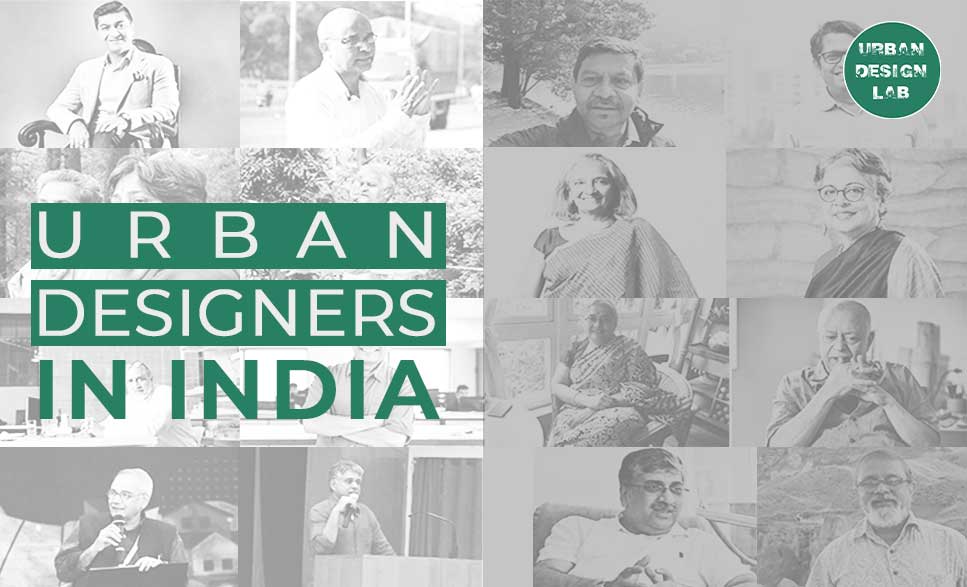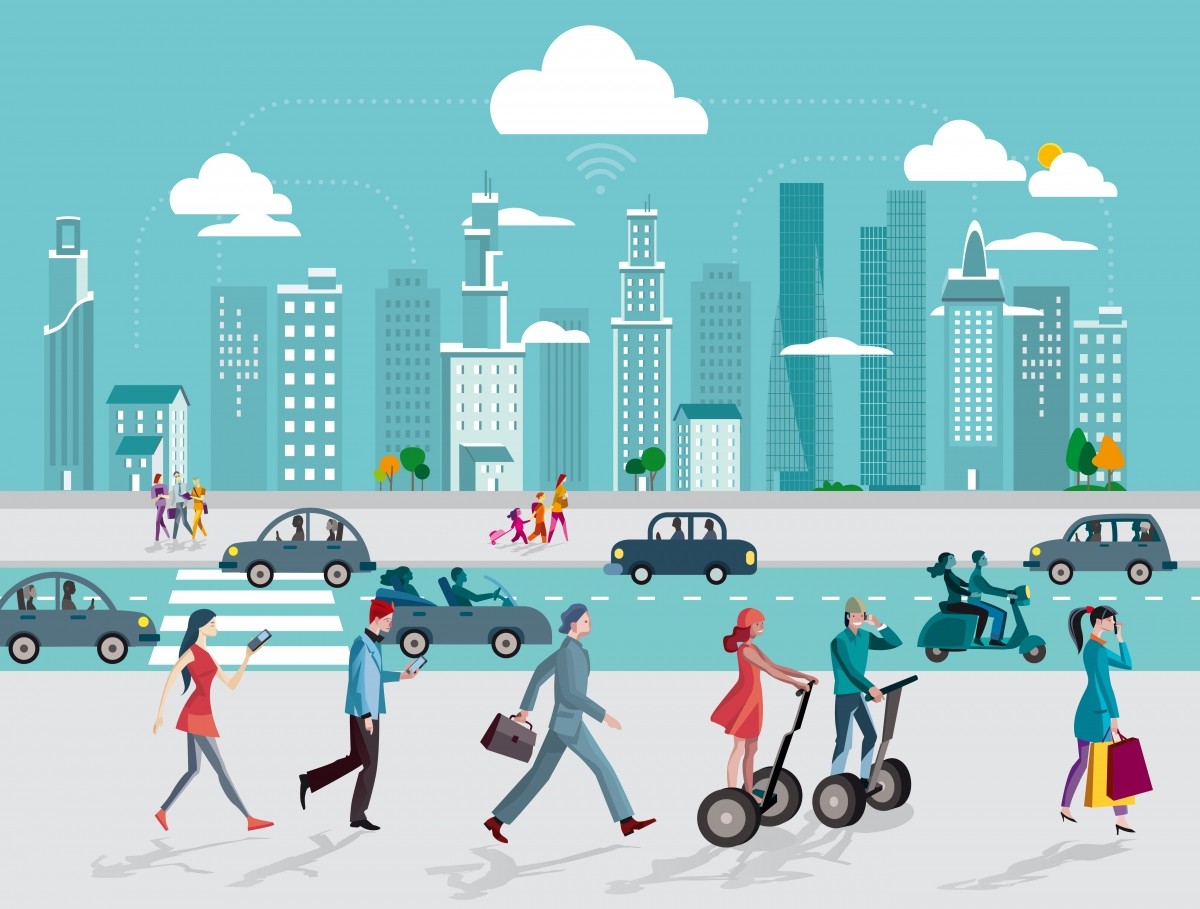
Urbanism By Any Other Name

In our ongoing quest for improving cities, we have come up with all manner of tactics for “good” urbanism, some of which even have organizations attached to their guiding principle. In my career I’ve done my best to collect these approaches (so to speak) in an attempt to trace the disparate threads we in the urbanist community have woven over time. As an anthropologist, patterns are my middle name – and lately I’ve been thinking more about what the best concept is for pursuing an urban ideal. Is there an effective overarching focus that applies to all aspects of the urban landscape? Can we rally behind a concept that pushes the boundaries of what we’ve done so far? What is the best way to clearly communicate a universal principle for urbanists and citizens alike?
Today, urbanism comes in many flavors – from lean, to bicycle focused, or simply just (capital-N) “New”. There are tactical varieties like guerilla and insurgent. Cities can be happy, healthy, and resilient. There are rebel cities, elusive cities, contested cities, even makeshift metropolises. We try to make cities smart or wise, legible or imageable. They can be life-sized, human-scale, or come in 8-80 and pop-up variations. We can see the city at eye level or see a better city, as we strive for walkable, equitable, sustainable, livable, and other -able urban environments.
You can tune a city or hack it, Copenhagenize it or depave it. You can walk [your city] or repair or city (and its intersections), retrofit suburbia or even attempt urban acupuncture. If that’s not your thing, you can try for smart growth and make a better block; make your town strong or active, your streets open or complete. While you’re at it, you might attempt to open your architecture and apply a pattern language or form-based codes. You can have a creative class or placemakers or straphangers and even a street fight for a right to the city. Blue zones can be triangulated or the whole thing can be cradle to cradle… And that’s just some of the language we’ve come up with in the last century of urban improvement.
But does it have to have a name? Why is it so hard to say that we are going to use rationality, reason, and empathy, to create a better city for our fellow humans?
THREE WAVES
Years ago, pioneering urbanists looked at our cities and realized something was wrong. Whatever perspective they came from, they took their observations and did what they could to fight back against top-down urban planning and lack of human-scale development. While some of these pioneers used soft terms to describe their urban revelations or techniques in what I call the first wave of urbanism, the second wave is where we see this explosion of branding (if I can call it that) as urbanists the world over attempted to apply their specialty to the existing paradigm. Like being a “good” transportation engineer, these urbanists brought their expanded understanding of cities to the fields of architecture, urban planning, and design. Even real estate development and land use planning got infiltrated (to various extents) by this mostly white male group of do-gooders.
The third wave – where I think we are now – is where it really gets interesting. Like third wave feminism, the third wave of urbanism seeks to normalize the kinds of livable urban elements in a more holistic way, focusing on our future as an urbanized species. In this way we don’t see it as a fight like our predecessors did – we see this as normal, expected, and the future of our cities. We expect our cities to be walkable and bikeable, to offer equitable choices in public transportation, and for public spaces to be safe environments in our diverse communities. And we expect this all to be under the larger umbrella of human rights, with equity at the core of every decision that influences the urban realm.
Putting a name on this cultural shift as we’ve done in the past is a risky endeavor. A name allows for greater recognition and can even include a comprehensive definition – something to work from when you ascribe to their particular system. However, a brand can also exclude larger concepts, through either intellectual property ownership on the part of the creators and/or due to the complex associations the owners may have in the larger community.
When I began investigating these urban solutions as an anthropologist, I was faced with a choice: the seminal works of Jane Jacobs and William H. “Holly” Whyte (who were contemporaries at the time) and the Congress for New Urbanism (CNU) via the leadership of what they call DPZ – or the duo Andres Duany (D) and Elizabeth Plater-Zyberk (PZ). On the one hand, direct observations of social life in cities and an in-depth commentary on what cities should be like in their core based on investigations in New York City. On the other, a New Urbanism for a very technical set of procedures and a push for alternative form-based codes in an effort to retrofit suburbia – one of the greatest mistakes we made in the 20th century of cities.
Perhaps because of my social science (read: qualitative observational methods) background, I went with the former, diving deeper into research on human behavior in space and following a set of pioneers that I felt were unbound by some form of “best practice” urbanism. And therein lies the blessing and curse of branding urbanism – something for everyone, but not everyone for one thing.
THE FEMINIST CITY
But I think we’re beginning to see a shift towards a more inclusive approach to urbanism not branded by some singular concept. You can see this in the myriad of (mostly) millennial-owned creative design agencies that are springing up around the world. Whether embedded in the maker/DIY culture or not, these small-scale companies are bringing together the power of the people and collective action with a professional level of insight that ignores the dominant branded norm. Some examples include COurban Design Collective, The Connectors Society, Conexão Cultural (Cultural Connection), Co*Lab, and CoDesign Studio. They have embedded in their very names themselves the emphasis on collaboration, cooperation, connection, and collectivism in order to clearly express their ideals.
And get this – they’re all owned or led by women.
Those are just a few examples, but the fact that this seems to be a woman-led movement focused on the idea of collective action and co-design is telling. Like any paradigm shift, these changes often comes in waves based on an evolution of culture from one generation to the next. This generation is more diverse, more inclusive, and more open to freedom of identity and experience. I think we are on the precipice of a new wave of urbanism based in part on the normalization of this kind of tolerance and feminist ideals that are more commonplace in these upcoming generations.
And some cities agree. More than general equity, an emphasis on age, or a branded idea, women from Liberia to Austria are applying feminist leadership to their urban form from the policy level down. By emphasizing the need for planning for women and girls they hope to create a better city for everyone. In Vienna, they use “gender mainstreaming” based on a United Nations initiative (before it was relabeled the “fair shared city”) to create a feminist city. At Habitat III, the female mayors of Barcelona and Paris, Ada Colau and Anne Hidalgo, pushed for the Right to the City concept to be included in the New Urban Agenda set by the gathering – a broader concept that can be applied to any citizen’s right to have their needs met in a city, with an emphasis on women and girls. For many female mayors, their leadership means a more nuanced approach to cities, and includes a strengthening of public transportation, childcare, and accessibility. And that’s to say nothing about the overarching gender equality initiatives in some of the most successful examples in the world in Scandinavian countries.
“We still live in sexist and patriarchal cities – patriarchy goes hand in hand with the neoliberal city; they are two sides of the same coin. But right now we have an opportunity for those individuals who have traditionally been let down as “second-class citizens” to become the main characters.” – Ada Colau the first female mayor of Barcelona
I consider myself a humanist, but also a feminist – a fairly new association for me due in part to the recent shocking backlash towards women in our political climate, and this need to push for the most effective solution. In the past I’ve said that the future is human, but I’ve recently come to the conclusion that if women’s rights are human rights, it stands to reason that a feminist city is a humanist city. While it’s true that a woman’s body may not be a feminist mind, and not every female mayor is leading an effort to improve the lives of women in their city, it is still the case that women bring with them a set of experiences different in important ways from those of many of their male peers. And like the incredibly successful Women’s March on Washington, a feminist city has the ability to unify all gender identities, all abilities, ages, and ethnic backgrounds, around the unifying concept of respecting – and in this case planning for – women.
It might be a radical concept, and it’s certainly not perfect, but I think a feminist city ideal may be the best unifying focus for this third wave of urbanism. I believe that women are one of the best ways to look more inclusively at urban design and that we bring to the table a set of nuances and experiences that carry over to a number of other under-represented groups. Whatever the case, we need a more holistic look at architecture, urban planning, and engineering. We need a new paradigm for urbanism – not one that is owned or classified – but one that is co-owned, co-created, and co-designed.
If this future of cities – as they say – is female, then from where I’m standing the future of cities is bright.

Author: THINK.urban
Program: Urban Planniing
Year: February 26, 2017
Related articles
5-Days UDL GIS
Masterclass
GIS Made Easy – Learn to Map, Analyse, and Transform Urban Futures
Session Dates
14th-18th July 2025

Free E-Book
From thesis to Portfolio
A Guide to Convert Academic Work into a Professional Portfolio”
Recent Posts
- Article Posted:
- Article Posted:
- Article Posted:
- Article Posted:
- Article Posted:
- Article Posted:
- Article Posted:
- Article Posted:
- Article Posted:
- Article Posted:
- Article Posted:
- Article Posted:
- Article Posted:
- Article Posted:
- Article Posted:
- Article Posted:
Sign up for our Newsletter
“Let’s explore the new avenues of Urban environment together “




















































